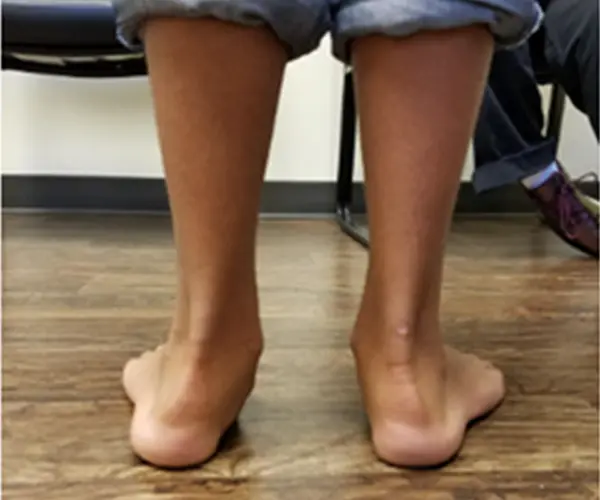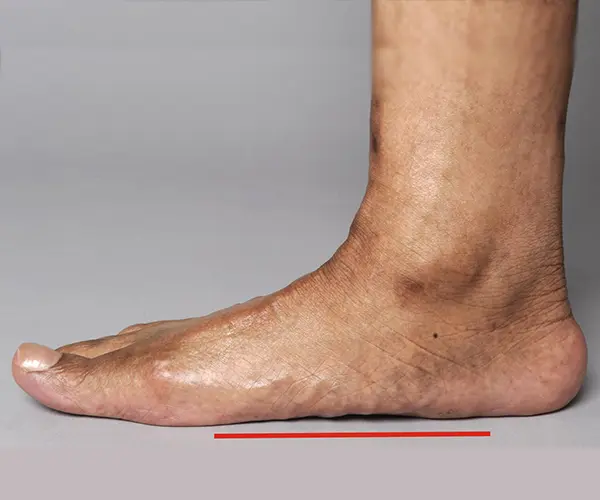Flatfoot Specialist
Flatfoot Specialist
Flatfoot, also known as pes planus, is a common condition where the arch of the foot is significantly reduced or nonexistent, causing the entire sole to touch the ground when standing or “collapse of your foot arch”. Dr. Ryan M. Sherick proudly serving: Thousand Oaks, Westlake Village, Agoura Hills, Malibu, Calabasas, West Hills, Chatsworth, and the entire Conejo Valley, Santa Rosa Valley, and greater Los Angeles area.

Dr. Ryan M. Sherick is a renowned Fellowship-trained Foot and Ankle Surgeon and Podiatrist with extensive experience in diagnosing and treating flatfoot disorders even in the most complex circumstances. Dr. Sherick offers comprehensive care and personalized treatment plans to address the specific needs of each patient. Whether through non-surgical modalities such as orthotics, physical therapy, or surgical interventions if necessary, Dr. Sherick will guide you on getting you the best outcome possible for your condition.
Don’t let a flatfoot deformity limit your mobility or cause you discomfort in day-to-day life. Visit Dr. Ryan M. Sherick in Thousand Oaks, CA and take the first step together towards a more comfortable and active lifestyle.
Causes of A Flatfoot Deformity or Collapsed Arch
At Apex Foot and Ankle in Thousand Oaks, California, we believe in providing comprehensive care for all your foot and ankle concerns. Dr. Ryan M. Sherick, our experienced fellowship-trained Foot & Ankle Surgeon, specializes in addressing various foot and ankle pathologies including flatfoot or a collapsed arch. Dr. Sherick specializes in addressing flatfoot, a common condition with various causes:

1. Under Development in Childhood:
Flatfoot in children is often a result of underdevelopment in the arches of the feet. During early childhood, arches are not fully formed, and some children may have a flat appearance to their feet. In most cases, arches develop as the child grows. However, some children may continue to have flat feet, leading to discomfort or pain. Often if not treated appropriately a flatfoot deformity can progress in nature and become more severe over time. Dr. Ryan M. Sherick can assess your child’s condition and guide appropriate treatment options such as having arch supports or supportive shoes.
2. Age-Related Flatfoot:
As we age, the supporting structures of our feet may weaken, leading to a progressive gradual flattening of the arches. This age-related condition is known as adult-acquired flatfoot. It can cause pain, instability, and difficulty walking. In more severe deformities patients may be susceptible to arthritic changes in their foot or ankle. Dr. Sherick can help manage age-related flatfoot through conservative treatments or surgical interventions, depending on the severity of the condition.
3. Rheumatoid Arthritis:
Rheumatoid arthritis (RA) is an autoimmune condition that can affect the joints, including those in the feet. Inflammation associated with RA in the joints can lead to the development of flatfoot. Dr. Sherick has expertise in managing the foot-related complications of rheumatoid arthritis, offering relief, and improving the quality of life for those affected.
4. Diabetes:
Diabetes can lead to a range of foot problems, including flatfoot. Nerve damage and poor circulation associated with diabetes can affect the arches of the feet. Dr. Sherick and the team at Apex Foot and Ankle are well-equipped to provide specialized care for diabetic patients with flatfoot, helping to prevent complications and ensuring the best possible foot health.
At Apex Foot and Ankle, we prioritize patient education and tailored treatment plans to address the underlying causes of flatfoot, whether it’s a result of childhood development, aging, rheumatoid arthritis, or diabetes. If you or your child is experiencing flatfoot or related symptoms, don’t hesitate to contact Dr. Sherick if you live in the following areas: Thousand Oaks, Westlake Village, Agoura Hills, Malibu, Calabasas, West Hills, Chatsworth, and the entire Conejo Valley, Santa Rosa Valley, and greater Los Angeles area. Your feet deserve the best care, and we’re here to provide it.
Frequently Asked Questions
How can I tell if I have flatfoot?
Determining if you have flat feet can be challenging without a specialist to help. Only a doctor can make an accurate diagnosis. One common test is the water test. Soak your feet and then stand on a flat surface. If a large part of your foot leaves a footprint, it suggests you may have flat feet.
Dr. Sherick can use various tests, like X-rays, CT scans, MRIs, and ultrasounds, to diagnose your condition. He may also examine your foot mechanics and the wear patterns on your shoe soles to provide a thorough evaluation.
How can I prevent flatfoot?
To prevent flatfoot, maintain a healthy weight to reduce strain on your feet. Choose supportive footwear with good arch support such as an orthotic and cushioning. Perform regular foot-strengthening exercises, like calf raises and toe curls. If your flatfoot causes discomfort, consult a podiatrist or foot and ankle specialist for custom orthotics. Ensure a balanced diet for overall bone health and consider consulting a healthcare professional for personalized guidance.
Do home treatments work?
Home treatments can help manage flatfoot to some extent. Rest, ice, and over-the-counter pain relievers can alleviate discomfort. Stretching exercises and physical therapy may improve flexibility and strength in the feet. Supportive footwear and shoe inserts can provide relief. However, for severe flatfoot, custom orthotics or professional guidance may be necessary. Consult a healthcare professional.
Request An Appointment
Need Help With Your Foot And Ankle?
